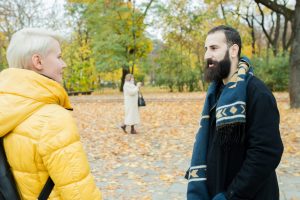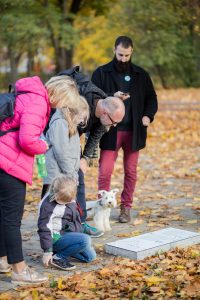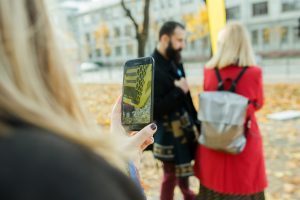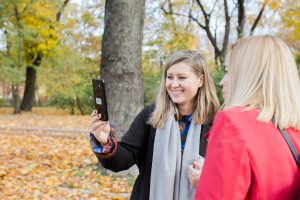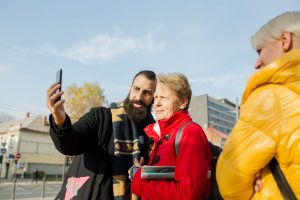Bičiulystė
Emerging artist: Konstantin Djuričković
Residency place: Kaunas Biennial (Kaunas, Lithuania)
Practice: digital sculpture
Local Artists: “Kaunas 3022”
Curated by: Neringa Stoškutė
Bičiulystė is a site-specific interactive digital sculpture, realised by the Serbian artist Konstantin Djuričković, inspired by the history of Ramybės Park. The site of Ramybės Park (Kaunas Old Cemetery) has a multi-layered history – starting from a Carmelite forest in the 18th century, becoming the main city cemetery in the middle of the 19th century and, eventually, turning into a park in the middle of the 20th century. When the site was designated as the main city cemetery it was divided into four parts: central (largest) part – Catholic, southern part – Orthodox, northern part – Evangelical Lutheran and north-eastern part – Muslim. It is also worth noting that in 1956, during All Saints Day, several thousand people gathered in Ramybės Park to express their solidarity for the Hungarian Revolution, which resulted in loud chants of freedom for Lithuania. Although the consequences were harsh, each year people gathered in the cemetery on All Saints Day to protest against the Soviet rule. In 1959 Kaunas Old Cemetery was closed and the graves were moved.
With its complicated layers of history, the story of Ramybės Park cannot be told by one simple narrative. Bičiulystė creates a multi-layered narative using ancient symbolic language: north, east, south, west, sun, moon, time, space, autumn, winter, spring and summer. The symbols are embedded into honeycomb-shaped spheres, chosen for their symbolic meaning of unity and prosperity, immortality and rebirth. Bičiulystė provides an opportunity not only to create your own story, but to look deeper into connections between people, processes that constitute communal values and cultural thought. It tells a contemporary narrative of the park and its history from a temporal standpoint and acts as a catalyst for the local community to reflect their own stories of the past and a cornerstone for the future stories of generations to come.
The title Bičiulystė refers to an ancient Baltic and Slavic custom of neighbours or relatives jointly keeping a beehive. Such people were called bičiuliai, a word also used in Lithuanian language now, meaning ‘friend’ or ‘kin’. Bičiuliai were obliged to fully support each other and look after one another as it was believed that the amount of honey brought by the bees to the hives and the fate of the bees depended on it. The removal of the honey from the hive was a celebration of and for neighbours. All relatives, friends and neighbours were invited and served fresh honey with honeycomb together with cheese, cucumber and barley beer. After World War I, the custom of bičiulystė in Lithuania began to decline. Therefore, bičiulystė is an expression of the symbolic meaning of kinship through honey, which is ought to be restored in the manner of sharing worth in another variant – art and stories, and stories told through art.
The site-specific interactive digital sculpture can be fully experienced via a mobile application. It is accompanied by a soundtrack, produced by local musicians “Kaunas 3022”. The initiative aims to connect artists, audiences, institutions and activists through different cultural activities and events.
Bičiulystė was presented during “The City Telling Festival” as part of “Kaunas – European Capital of Culture 2022” programme.



